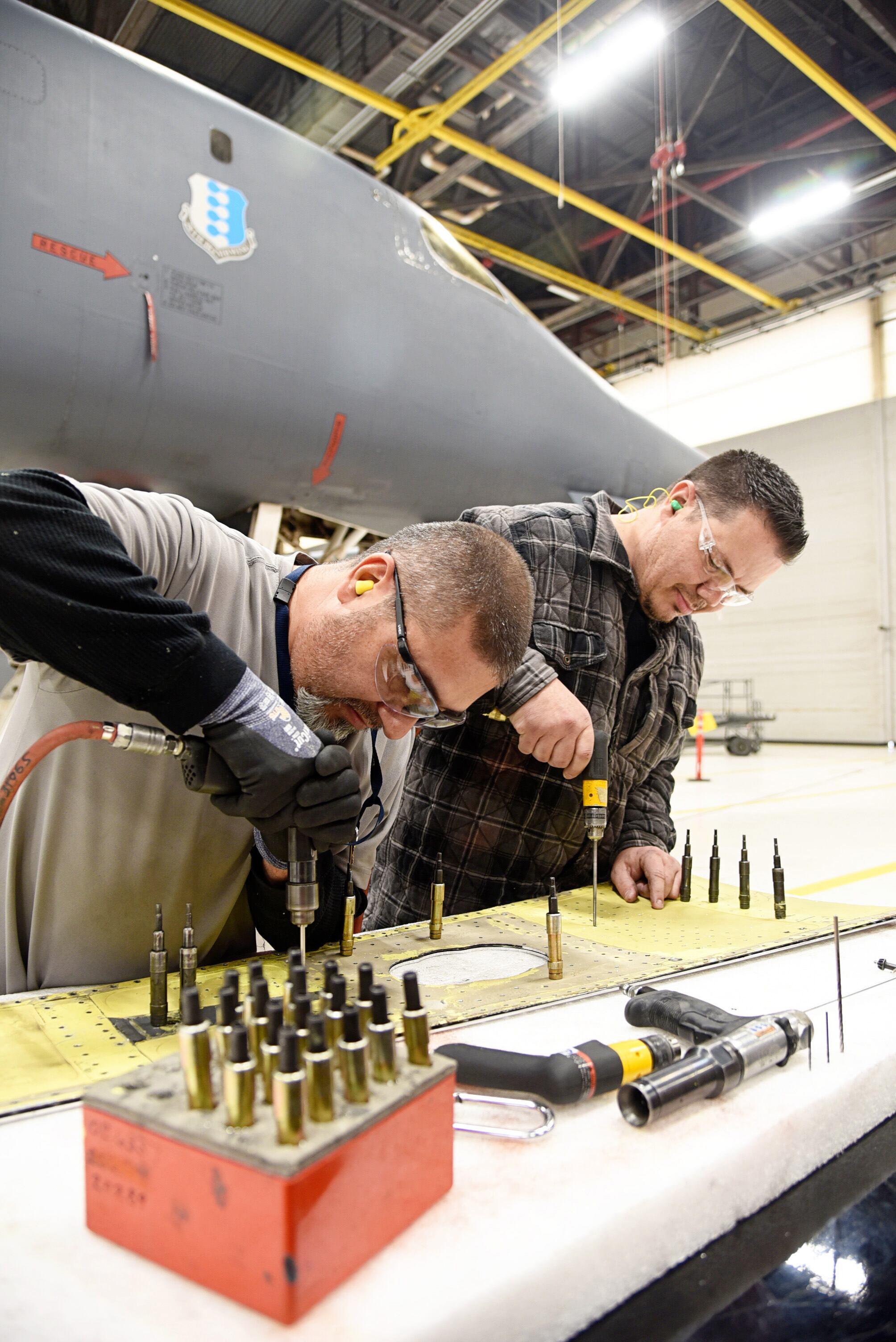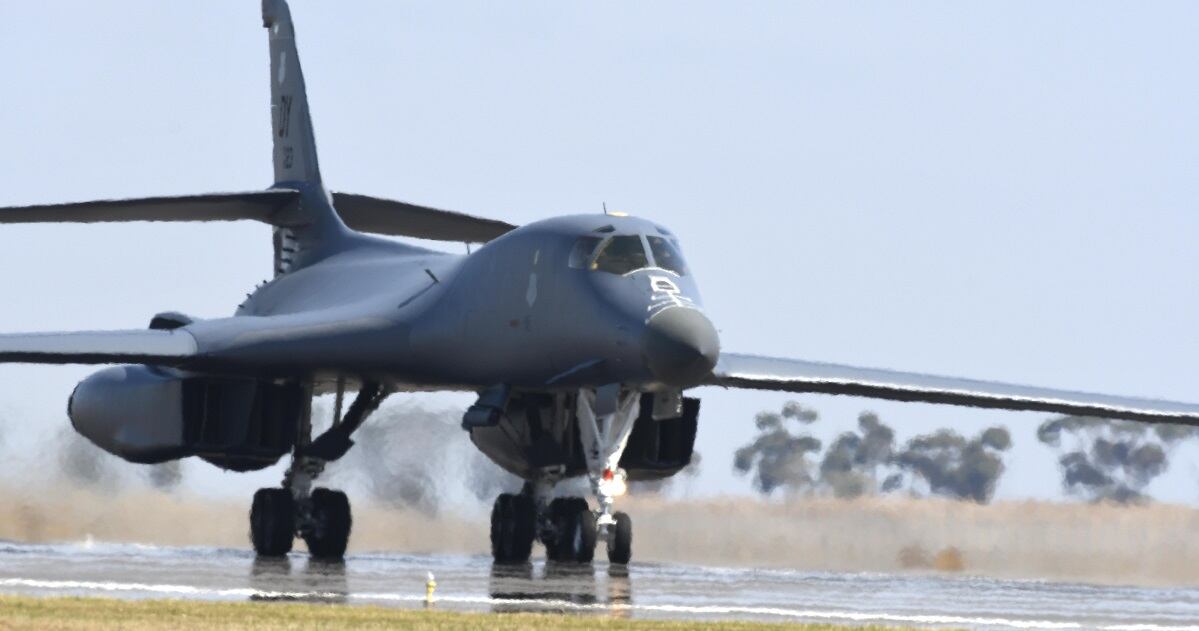The first B-1B Lancer to enter a crucial structural repair and maintenance process is nearly done, the Air Force said in a release Thursday, marking a key milestone in the effort to extend the life of the key bomber.
The first B-1 took flight in 1984, and today, the average B-1 is about 32 years old. For about half of its life, the last 15 years, it’s been flown hard over Iraq, Afghanistan and other theaters in the War on Terror.
And those years are starting to catch up to the Lancer.
“It’s been flown past its certified service life and, as such, it’s developed numerous structural issues and we’ve been working on repairs for over the last four or five years,” Bill Barnes, director of the B-1 Systems Program Office, said in the release.
The Air Force is even considering restricting B-1 pilots from using its low-altitude terrain-following capability, or TERFLW mode, during training to lessen the strain on the air frame, Military.com reported on Sunday.
The situation has gotten so bad that just six of the Air Force’s fleet of 62 B-1s were fully mission-capable in August, now-Vice Chairman of the Joint Chiefs of Staff John Hyten said at his Senate Armed Services Committee nomination hearing. Hyten called them “the workhorse of the Air Force today.”
“We saw issues in the B-1 because we’re just beating the heck out of them, deploying them, deploying them,” Hyten said. “And so we had to pull back a little bit and get after fixing those issues, and the depots can do that if they have stable funding.”
The Lancer has also been grounded twice over the past two years due to problems with its ejection seats.
So to keep the B-1 flying another 20 years, Barnes’ office got together with the 76th Aircraft Maintenance Group at Tinker Air Force Base in Oklahoma to stand up a repair line focused solely on the bomber’s structural issues.
“We have those repairs developed, we know what aircraft tail numbers those repairs apply to,” Barnes said.
Funding for the repair efforts got freed up once fiscal 2020 began, and the first B-1 to go through the structure line arrived at Tinker in October, the Air Force said. It’s now almost finished.

Col. Greg Lowe, commander of the 76th, said it’s impressive that the Air Force knows exactly which tail numbers have excessive fatigue or corrosion that could lead to serious mishaps down the line. That way, he said, the Air Force doesn’t have to do work on the entire fleet, and can keep the number of aircraft in the depot to a minimum.
“We want to apply the principles of the art of the possible just like we do for all of our other production lines, not only in the [76th], but across the Air Force Sustainment Center,” Lowe said.
RELATED

The 567th Aircraft Maintenance Squadron worked with the program office logistics professionals, equipment specialists and the enterprise team to stand up phase one of the repair line, said the squadron’s director, Rodney Shepard.
This included repairing seven urgent tasks on 10 aircraft that had high flying-hour requirements and known structural issues, the release said. Each aircraft’s repairs are expected to be done in 30 days, with 5,000 man-hours of repair for each plane.
Sheet metal and aircraft technicians, working in two shifts, will handle phase one of the structural repairs, the release said.
Phase two will be even more intensive when it begins next April. B-1s will be continually streaming through, and each plane will require 14,000 man-hours of repair. This will require a 50 percent increase in workforce numbers.
Tinker has hired more than 100 new employees in the past year to prepare for this effort, Shepard said. And the work is expected to stay at Tinker for the rest of the B-1′s life.
“The B-1′s been a great plane over in the desert,” Barnes said. “We’ve flown it hard, worked it hard, and now it’s time for a little downtime to get some repairs made so we can have the aircraft ready to deploy when necessary to support the needs of the nation.”
Stephen Losey is the air warfare reporter for Defense News. He previously covered leadership and personnel issues at Air Force Times, and the Pentagon, special operations and air warfare at Military.com. He has traveled to the Middle East to cover U.S. Air Force operations.





